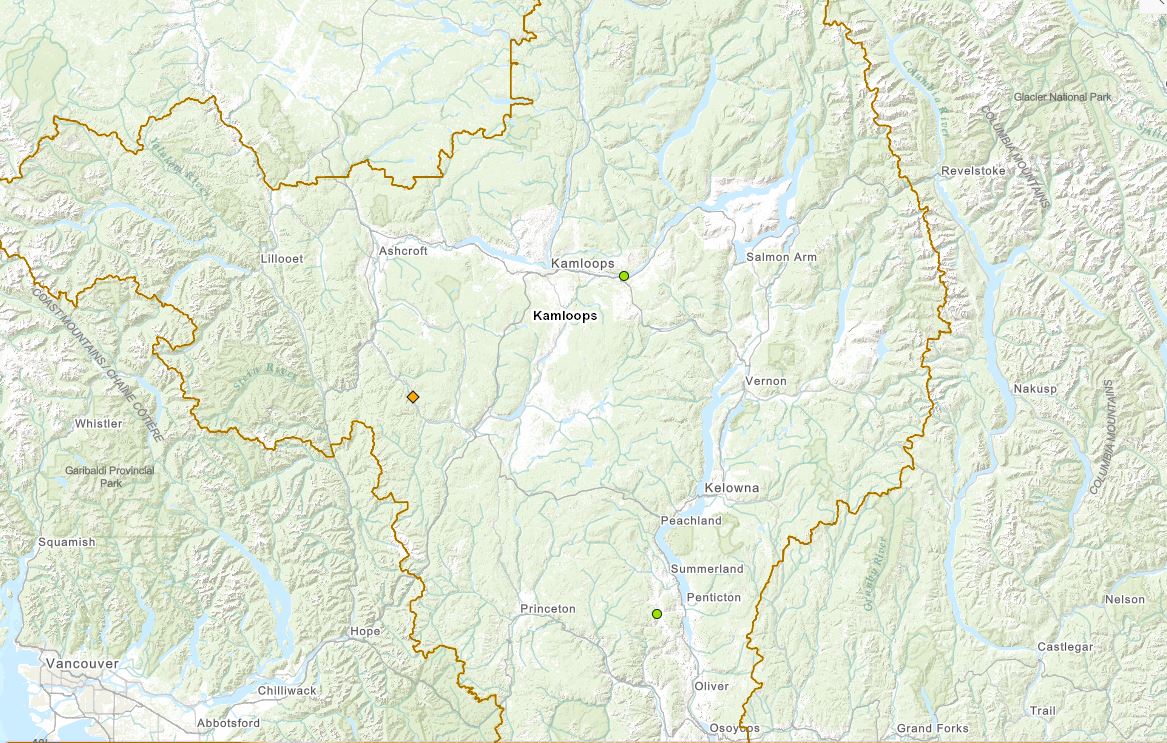With winter coming to an end and spring just around the corner, warmer temperatures also bring an increased risk of wildfires.

In B.C.’s wildfire country, three small grass fires sprung to life over the weekend.
A 3.1-hectare blaze was discovered along Shuswap Road northeast of Kamloops, B.C., on March 13.
Crews also responded to a 2.3-hectare fire near Farleigh Lake Road East west of Penticton, B.C., that same day.
And an 11-hectare wildfire was also discovered along the Dot Ranch Cut Off Road west of Merritt, B.C.
The BC Wildfire Service says all three fires are believed to be human-caused and are under control.
Fire information officer Gagan Lidhran told Global News the fire activity is typical for this time of year.
“The ground fires were primarily dry grass, which was the driver of the fire, and that’s usually what we typically see in terms of fuels burning at the beginning of the fire season,” she said.
Lidhran said the fires were primarily wind-driven so the embers were pushed into adjacent fuels in the area.
“Early in the year and while conditions are dry, we do remind the public to please be cognizant of their fire usage before the grass greens up,” she said.

Lidhran described the grass as dry and volatile, susceptible to combustion and a fire risk.
“The risk is higher during the primary day hours. We find that the overnight recoveries do help because it is cooler in the evening,” she said.
The BC Wildfire Service said the weekend fire activity in the B.C. Interior should serve as a reminder to the public to be cautious in the backcountry.

“Keep your campfire a half metre by a half metre, make sure to have a shovel and eight litres of water on you to extinguish the fire, never leave your campfire unattended, make sure you have a fuel break around the perimeter of the fire,” Lidhran said.
Okanagan temperatures are warming up to double-digits mid-week.
B.C.’s 2020 wildfire season wraps up on March 31, the end of the fiscal year. B.C. recorded a total of 655 wildfires, which scorched 14,451 hectares of earth.
It was a relatively mild fire season compared to the 10-year average, which is 1,758 wildfires from April 1 to March 31 the following year.
On average, 46.3 per cent of the fires are confirmed human-caused and 63 per cent are confirmed lightning-caused, according to data provided by the BC Wildfire Service.
B.C.’s most devastating wildfire seasons in the past decade occurred in the summers of 2017 and 2018.
In 2017, 1,300 fires burned 1.2 million hectares of land and cost the province $649 million in firefighting resources.
In 2018, 2,117 fires scorched 1.3 million hectares of land. It cost B.C. $615 million to suppress the fires.
- Ontario First Nation declares state of emergency amid skyrocketing benzene levels
- Singh mulls TikTok return as U.S. nears potential ban over security fears
- More financial institutes are offering crypto-services, survey shows
- Possible TikTok ban in U.S. looms after Biden signs bill, setting up legal fight





Comments